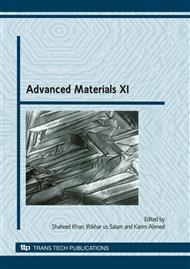p.349
p.356
p.364
p.372
p.381
p.393
p.398
p.404
p.415
Comparative Study for the Design of Optimal Composite Pressure Vessels
Abstract:
Composite pressure vessels require special design attention to the dome region because of the varying wind angles generated using the filament winding process. Geometric variations in the dome region cause the fiber to change angels and thickness and hence offer difficulty to acquire a constant stress profile (isotensoid). Therefore a dome contour which allows an isotensoid behavior is the required structure. Two design methods to generate dome profiles for similar dome openings were investigated namely Netting Analysis and Optimal Design method. Both methods assume that loads are carried by the fiber alone (monotropic) ignoring the complete composite behavior. Former method produced a lower dome internal volume and a higher fiber thickness as compared to the later optimal design method when studied against different normalized dome opening radiuses. The optimal dome contour was studied in ANSYS with a trial design. The dome was considered to have transversely isotropic property with a dome contour based on monotropic model. While investigating the dome with non linear large displacement finite element analysis, the dome still exhibited isotensoid behavior with transverse isotropic material assignment. Elliptic integrals were used to generate the optimal dome contours and hence elliptic dome contours were formed which were isotensoid in nature with complete composite representation.
Info:
Periodical:
Pages:
381-388
Citation:
Online since:
June 2010
Authors:
Price:
Сopyright:
© 2010 Trans Tech Publications Ltd. All Rights Reserved
Share:
Citation:


